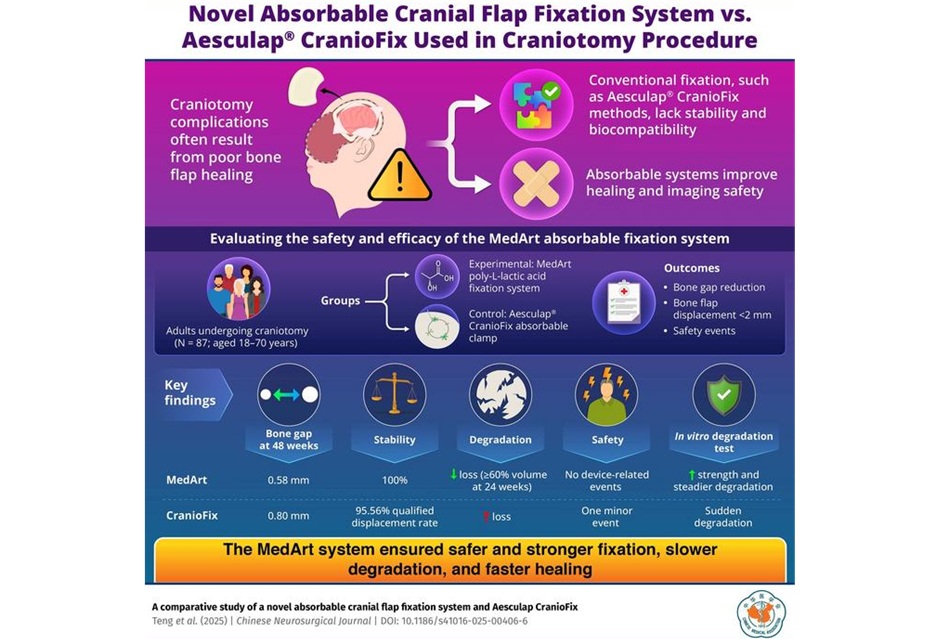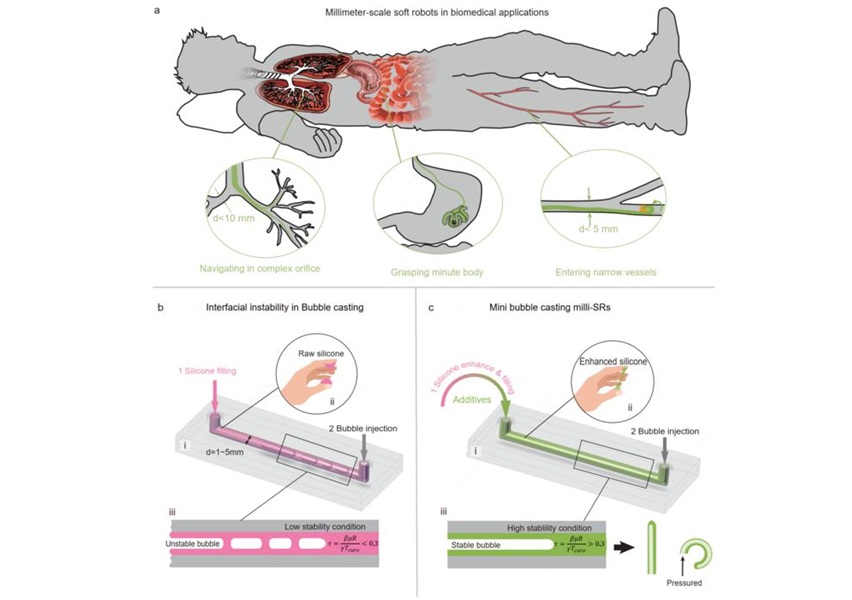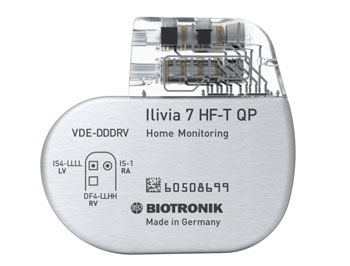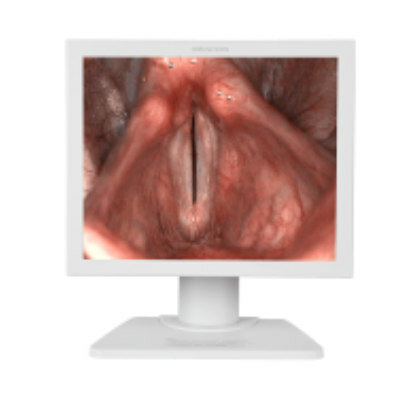Innovative ICDs Automatically Adapt to MRI Settings
|
By HospiMedica International staff writers Posted on 17 Feb 2016 |
A new line of implantable cardioverter defibrillators (ICDs) and cardiac resynchronization devices (CRT-Ds) can automatically detect MRI environments.
The Biotronik Ilivia ICDs and CRT-Ds feature both ProMRI, a technology that allows patients with a cardiac system to safely access MRI scanning, and MRI AutoDetect, which allows the cardiologist to activate a time window lasting up to 14 days, during which all device functionality is maintained until the patient undergoes the actual scan; at that point the device automatically switches into MRI mode. Once the scan is completed, all device functionality is once again restored automatically, all without the need for the cardiologist’s intervention.
Soon after the scan, the cardiologist receives a full report via Biotronik Home Monitoring, a system designed to replace device interrogation with customizable fully programmable alerts, with options to specify alert thresholds and ranges, and call-back notifications that direct the patient to contact the clinic. Other features include MultiPole Pacing (MPP) to improve therapy for CRT patients, a closed loop stimulation (CLS) algorithm for more adaptive pacing, and DX technology for ICDs and CRT-Ds. Biotronik Ilivia ICDs and CRT-Ds are products of Biotronik (Berlin, Germany).
“MRI AutoDetect will not only reduce the amount of time the patient’s device stays in MRI mode, but I expect it will also greatly improve the workflow between the cardiologist and radiologist, which will ultimately benefit our patients,” said Manuel Ortega, senior vice president of Biotronik. “MRI AutoDetect is the next step in ensuring that patients get the full benefit of both their implanted devices and diagnostic imaging.”
“Patients aren’t fully protected if they have an event while their devices are programmed in MRI mode, a period that currently can last a day or more depending on hospital workflows,” said Richard Kobza, MD, head of cardiology at Luzerner Kantonsspital (Lucerne, Switzerland). “Reducing the amount of time a device is in MRI mode is particularly crucial for ICD and CRT-D patients, and with MRI AutoDetect the only time these patients won’t be able to benefit from full device therapy is the short 30-minute window they spend in the MRI machine itself.”
At present, when a cardiac device patient needs to undergo a MRI scan, a cardiologist must program his or her device into a special mode that temporarily reduces the device’s functionality until the MRI scan is completed. Following the scan, the cardiologist must switch off the device’s MRI mode to allow the patient to once again have the full therapeutic benefits of their implanted device.
Related Links:
Biotronik
The Biotronik Ilivia ICDs and CRT-Ds feature both ProMRI, a technology that allows patients with a cardiac system to safely access MRI scanning, and MRI AutoDetect, which allows the cardiologist to activate a time window lasting up to 14 days, during which all device functionality is maintained until the patient undergoes the actual scan; at that point the device automatically switches into MRI mode. Once the scan is completed, all device functionality is once again restored automatically, all without the need for the cardiologist’s intervention.
Soon after the scan, the cardiologist receives a full report via Biotronik Home Monitoring, a system designed to replace device interrogation with customizable fully programmable alerts, with options to specify alert thresholds and ranges, and call-back notifications that direct the patient to contact the clinic. Other features include MultiPole Pacing (MPP) to improve therapy for CRT patients, a closed loop stimulation (CLS) algorithm for more adaptive pacing, and DX technology for ICDs and CRT-Ds. Biotronik Ilivia ICDs and CRT-Ds are products of Biotronik (Berlin, Germany).
“MRI AutoDetect will not only reduce the amount of time the patient’s device stays in MRI mode, but I expect it will also greatly improve the workflow between the cardiologist and radiologist, which will ultimately benefit our patients,” said Manuel Ortega, senior vice president of Biotronik. “MRI AutoDetect is the next step in ensuring that patients get the full benefit of both their implanted devices and diagnostic imaging.”
“Patients aren’t fully protected if they have an event while their devices are programmed in MRI mode, a period that currently can last a day or more depending on hospital workflows,” said Richard Kobza, MD, head of cardiology at Luzerner Kantonsspital (Lucerne, Switzerland). “Reducing the amount of time a device is in MRI mode is particularly crucial for ICD and CRT-D patients, and with MRI AutoDetect the only time these patients won’t be able to benefit from full device therapy is the short 30-minute window they spend in the MRI machine itself.”
At present, when a cardiac device patient needs to undergo a MRI scan, a cardiologist must program his or her device into a special mode that temporarily reduces the device’s functionality until the MRI scan is completed. Following the scan, the cardiologist must switch off the device’s MRI mode to allow the patient to once again have the full therapeutic benefits of their implanted device.
Related Links:
Biotronik
Read the full article by registering today, it's FREE! 

Register now for FREE to HospiMedica.com and get access to news and events that shape the world of Hospital Medicine. 
- Free digital version edition of HospiMedica International sent by email on regular basis
- Free print version of HospiMedica International magazine (available only outside USA and Canada).
- Free and unlimited access to back issues of HospiMedica International in digital format
- Free HospiMedica International Newsletter sent every week containing the latest news
- Free breaking news sent via email
- Free access to Events Calendar
- Free access to LinkXpress new product services
- REGISTRATION IS FREE AND EASY!
Sign in: Registered website members
Sign in: Registered magazine subscribers
Latest Critical Care News
- Biomaterial Vaccines to Make Implanted Orthopedic Devices Safer
- Deep Learning Model Predicts Sepsis Patients Likely to Benefit from Steroid Treatment
- Programmable Drug-Delivery Patch Promotes Healing and Regrowth After Heart Attack
- Breakthrough Ultrasound Technology Measures Blood Viscosity in Real Time
- Magnetically Activated Microscopic Robotic Swarms Could Deliver Medicine Inside Body
- Frequent ECG Use Can Identify Young People at Risk of Cardiac Arrest
- Ultrasound Controlled Artificial Muscles Pave Way for Soft Robots
- AI-Powered Alerts Reduce Kidney Complications After Heart Surgery
- Algorithm Predicts and Lengthens Pacemaker Battery Life
- Novel Pill Could Mimic Health Benefits of Bariatric Surgery
- AI Models Identify Patient Groups at Risk of Being Mistreated in Hospital ED
- CPR Guidelines Updated for Pediatric and Neonatal Emergency Care and Resuscitation
- Ingestible Capsule Monitors Intestinal Inflammation
- Wireless Implantable Sensor Enables Continuous Endoleak Monitoring
- Pulse Oximeter Index Offers Non-Invasive Guides for Fluid Therapy
- Wearable Patch for Early Skin Cancer Detection to Reduce Unnecessary Biopsies
Channels
Surgical Techniques
view channel
Magnetic Kidney Stone Retrieval Device Outperforms Ureteroscopic Laser Lithotripsy
Kidney stone disease affects millions worldwide and often requires ureteroscopic laser lithotripsy, yet fragment removal remains inefficient. Many patients are left with residual pieces that can cause... Read more
Absorbable Skull Device Could Replace Traditional Metal Implants Used After Brain Surgery
Closing the skull safely after neurosurgery remains a major clinical challenge, as traditional metal or semi-absorbable fixation devices can interfere with imaging, degrade unpredictably, or persist long... Read more
Magic Silicone Liquid Powered Robots Perform MIS in Narrow Cavities
Navigating the body’s smallest, tightest pathways has long restricted the reach of minimally invasive surgery. Traditional instruments struggle to access tunnels narrower than a grain of rice, limiting... Read more
'Lab-on-a-Scalpel' Provides Real-Time Surgical Insights for POC Diagnostics in OR
During surgery, waiting for laboratory test results can slow critical decision-making, especially in emergency or oncological procedures. Now, researchers have introduced a new diagnostic concept: a surgical... Read morePatient Care
view channel
Revolutionary Automatic IV-Line Flushing Device to Enhance Infusion Care
More than 80% of in-hospital patients receive intravenous (IV) therapy. Every dose of IV medicine delivered in a small volume (<250 mL) infusion bag should be followed by subsequent flushing to ensure... Read more
VR Training Tool Combats Contamination of Portable Medical Equipment
Healthcare-associated infections (HAIs) impact one in every 31 patients, cause nearly 100,000 deaths each year, and cost USD 28.4 billion in direct medical expenses. Notably, up to 75% of these infections... Read more
Portable Biosensor Platform to Reduce Hospital-Acquired Infections
Approximately 4 million patients in the European Union acquire healthcare-associated infections (HAIs) or nosocomial infections each year, with around 37,000 deaths directly resulting from these infections,... Read moreFirst-Of-Its-Kind Portable Germicidal Light Technology Disinfects High-Touch Clinical Surfaces in Seconds
Reducing healthcare-acquired infections (HAIs) remains a pressing issue within global healthcare systems. In the United States alone, 1.7 million patients contract HAIs annually, leading to approximately... Read moreHealth IT
view channel
Printable Molecule-Selective Nanoparticles Enable Mass Production of Wearable Biosensors
The future of medicine is likely to focus on the personalization of healthcare—understanding exactly what an individual requires and delivering the appropriate combination of nutrients, metabolites, and... Read moreBusiness
view channel
Philips and Masimo Partner to Advance Patient Monitoring Measurement Technologies
Royal Philips (Amsterdam, Netherlands) and Masimo (Irvine, California, USA) have renewed their multi-year strategic collaboration, combining Philips’ expertise in patient monitoring with Masimo’s noninvasive... Read more
B. Braun Acquires Digital Microsurgery Company True Digital Surgery
The high-end microsurgery market in neurosurgery, spine, and ENT is undergoing a significant transformation. Traditional analog microscopes are giving way to digital exoscopes, which provide improved visualization,... Read more
CMEF 2025 to Promote Holistic and High-Quality Development of Medical and Health Industry
The 92nd China International Medical Equipment Fair (CMEF 2025) Autumn Exhibition is scheduled to be held from September 26 to 29 at the China Import and Export Fair Complex (Canton Fair Complex) in Guangzhou.... Read more













